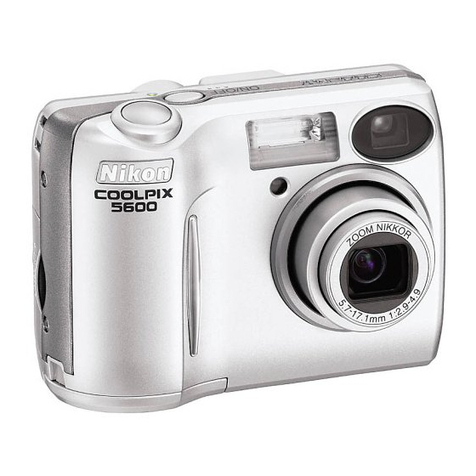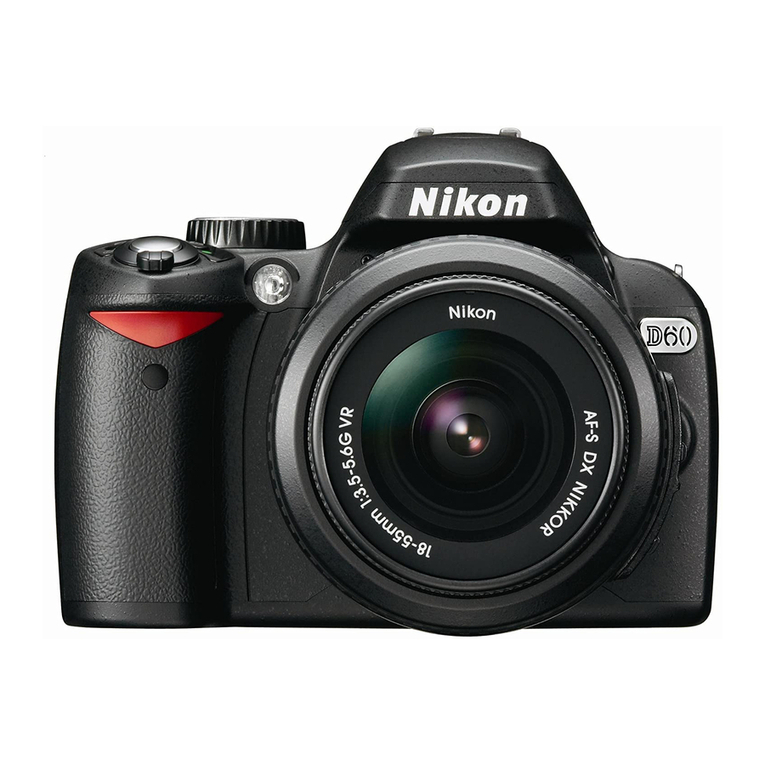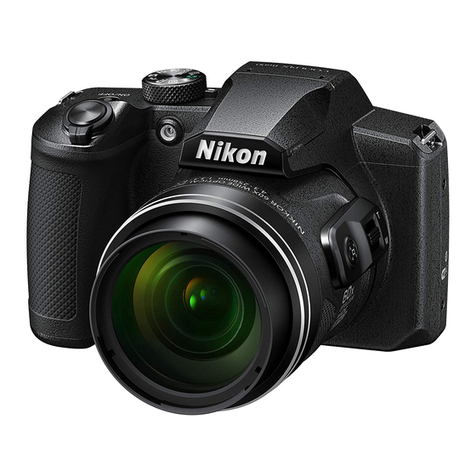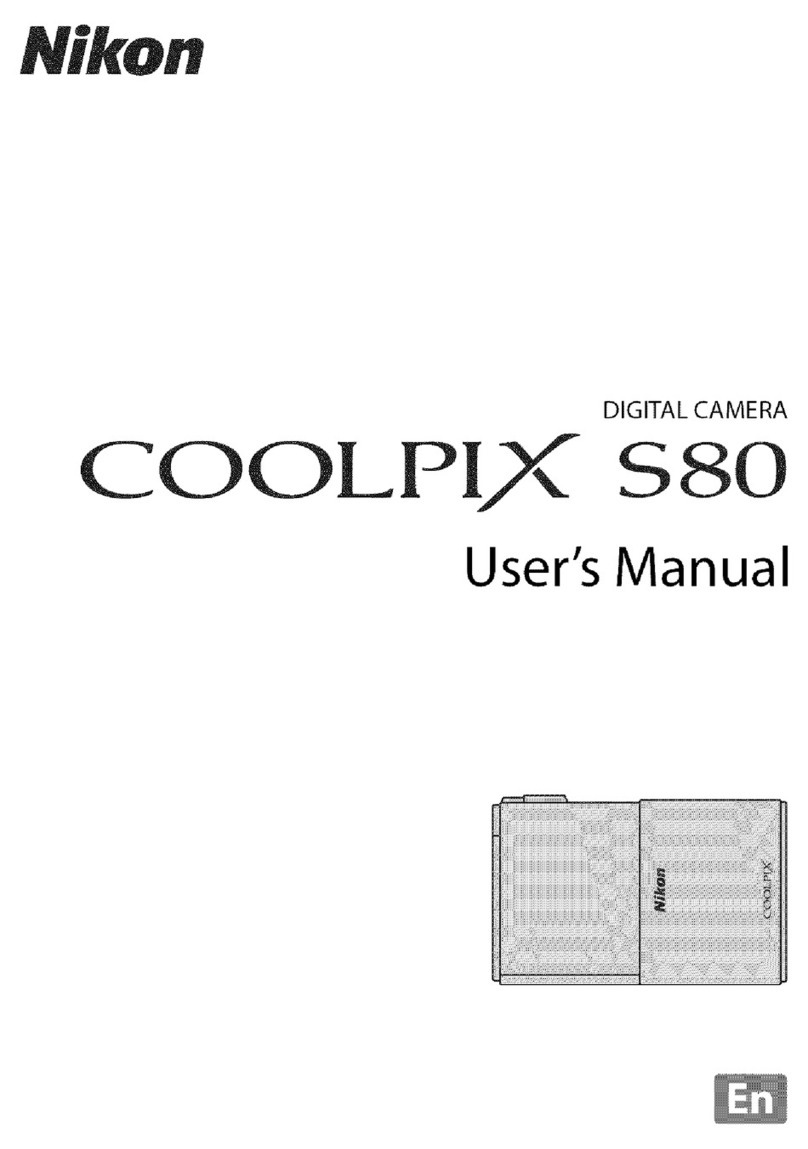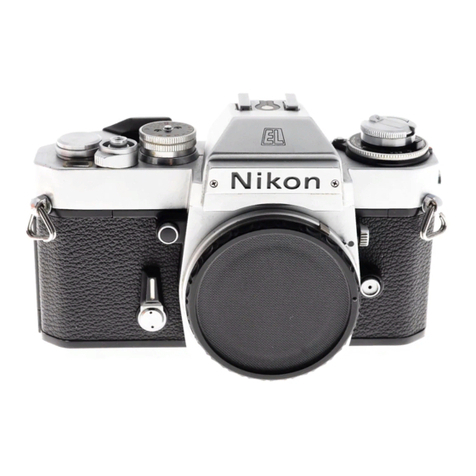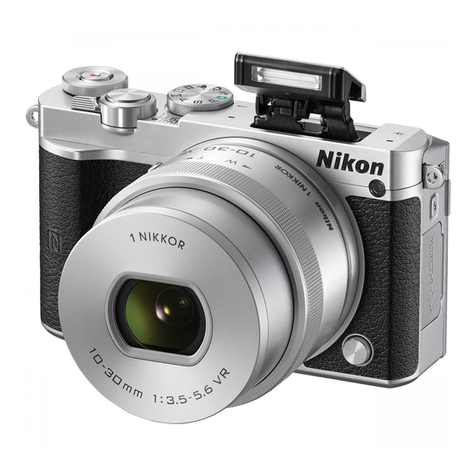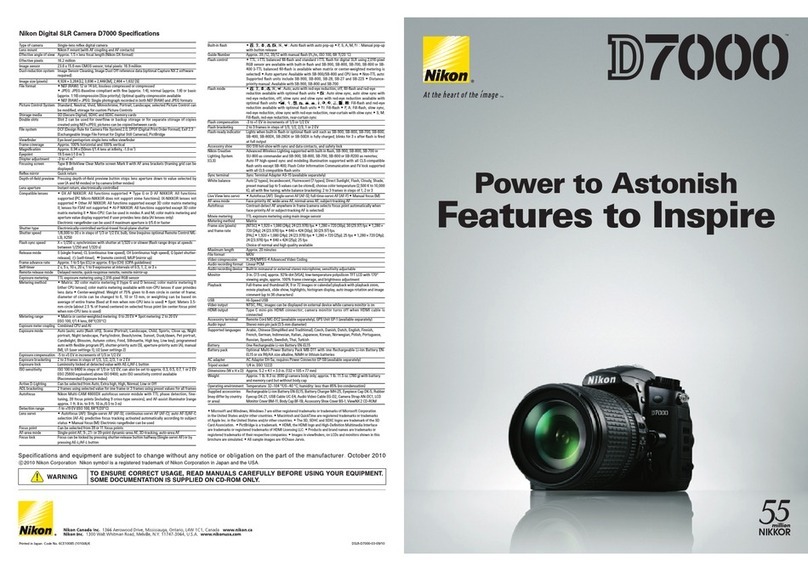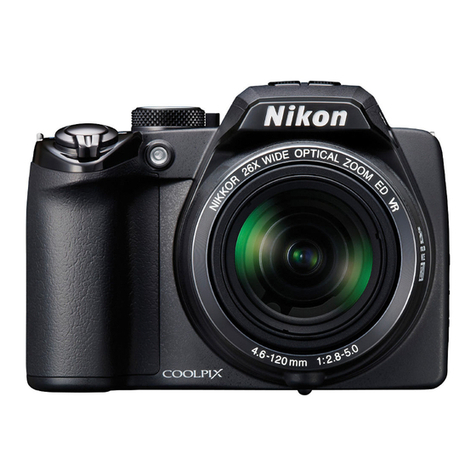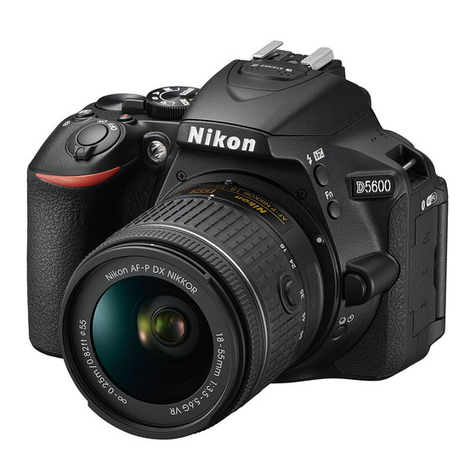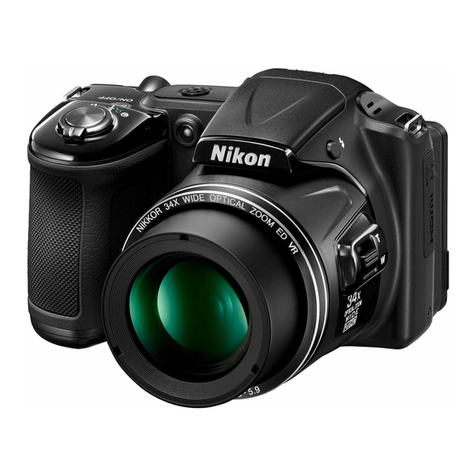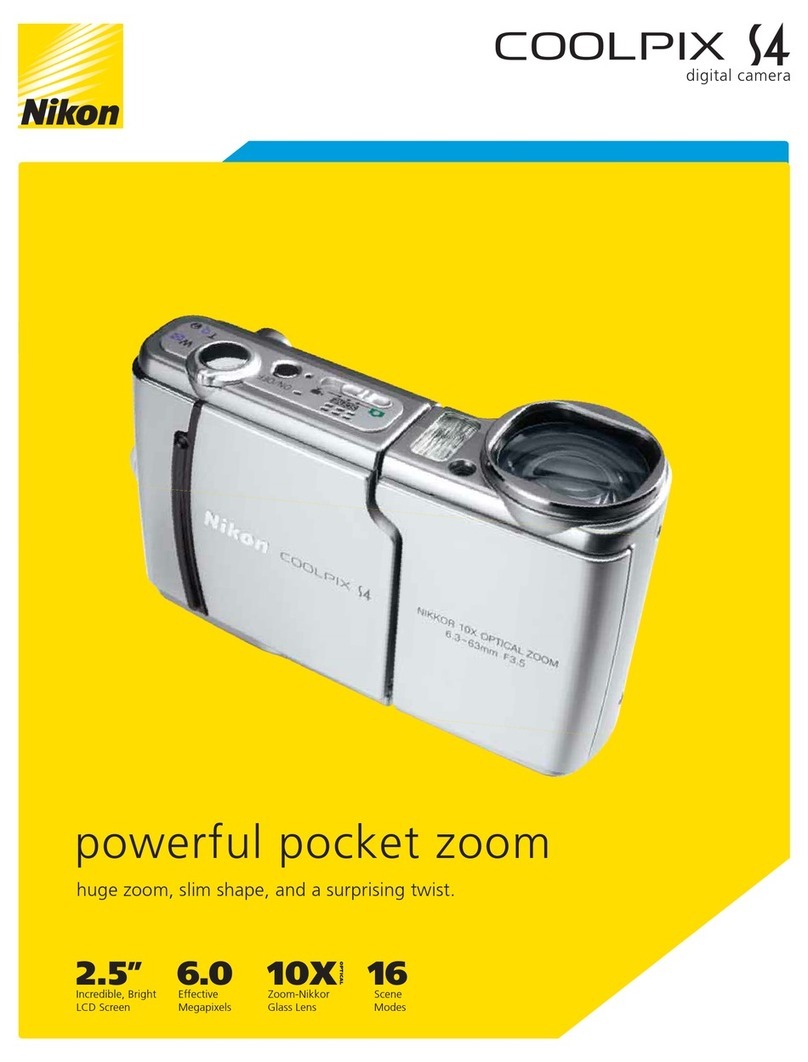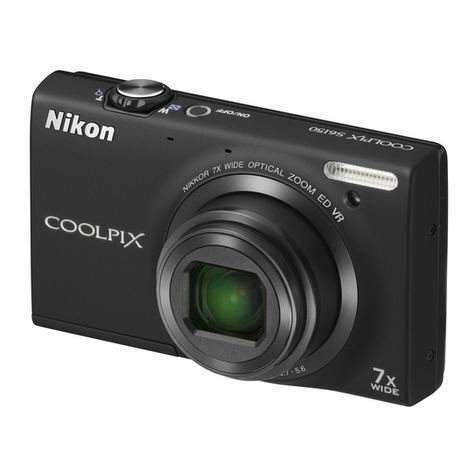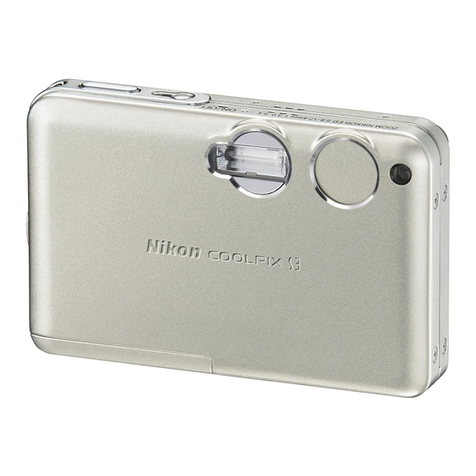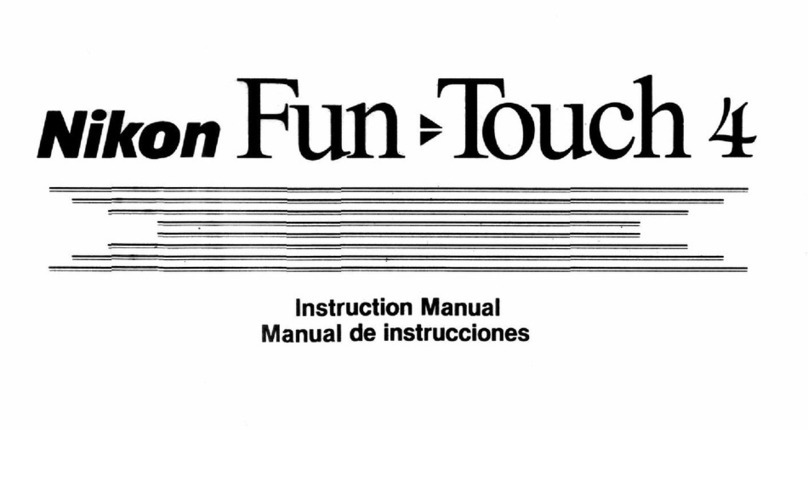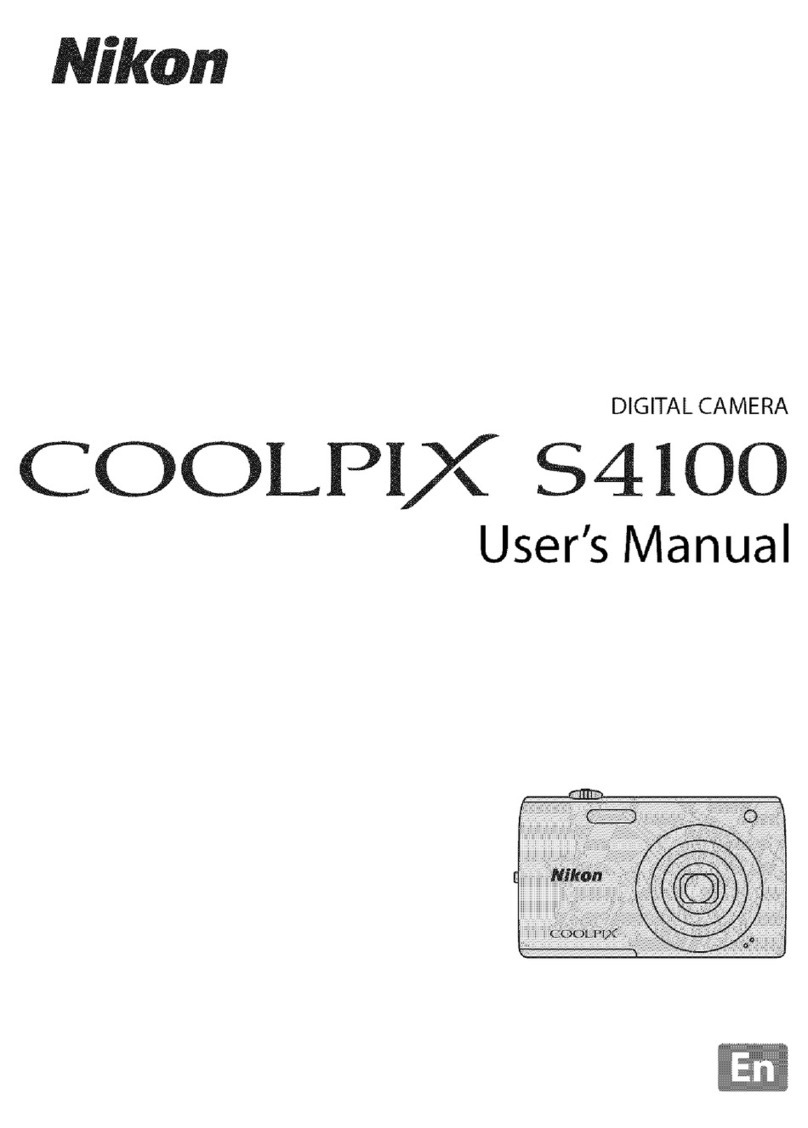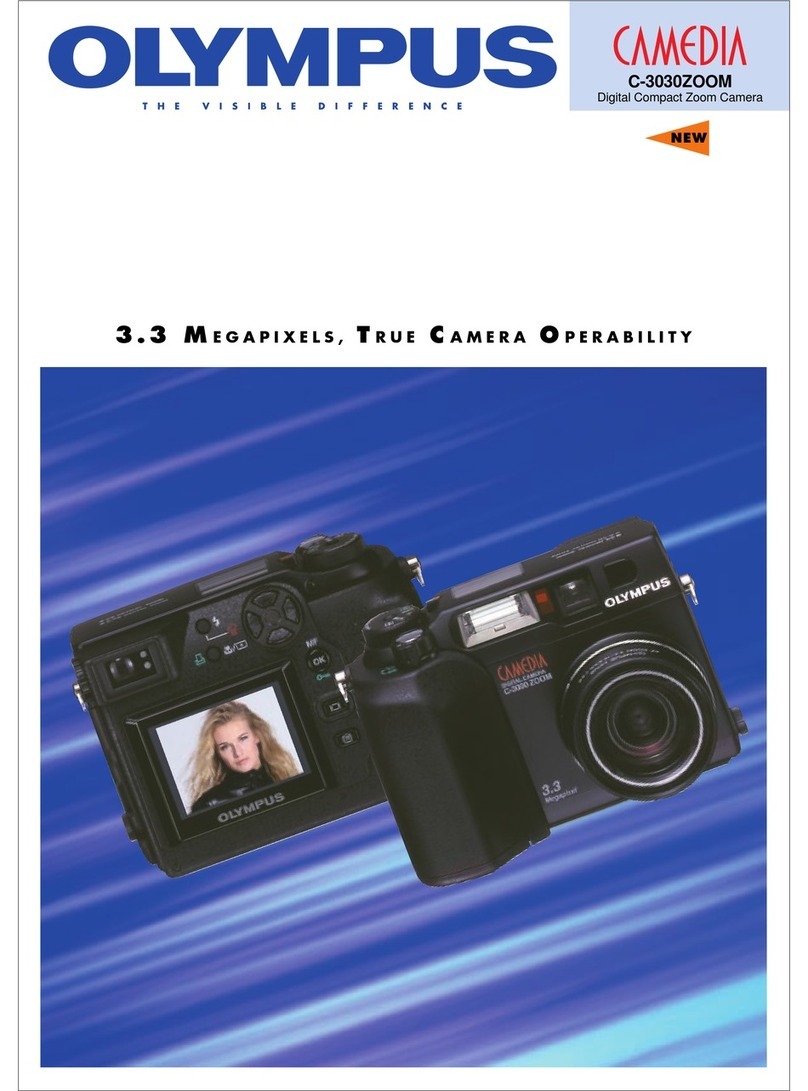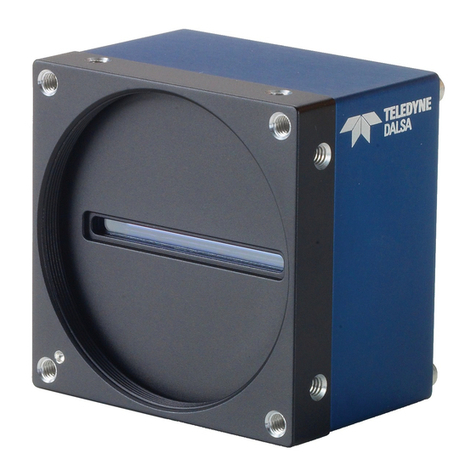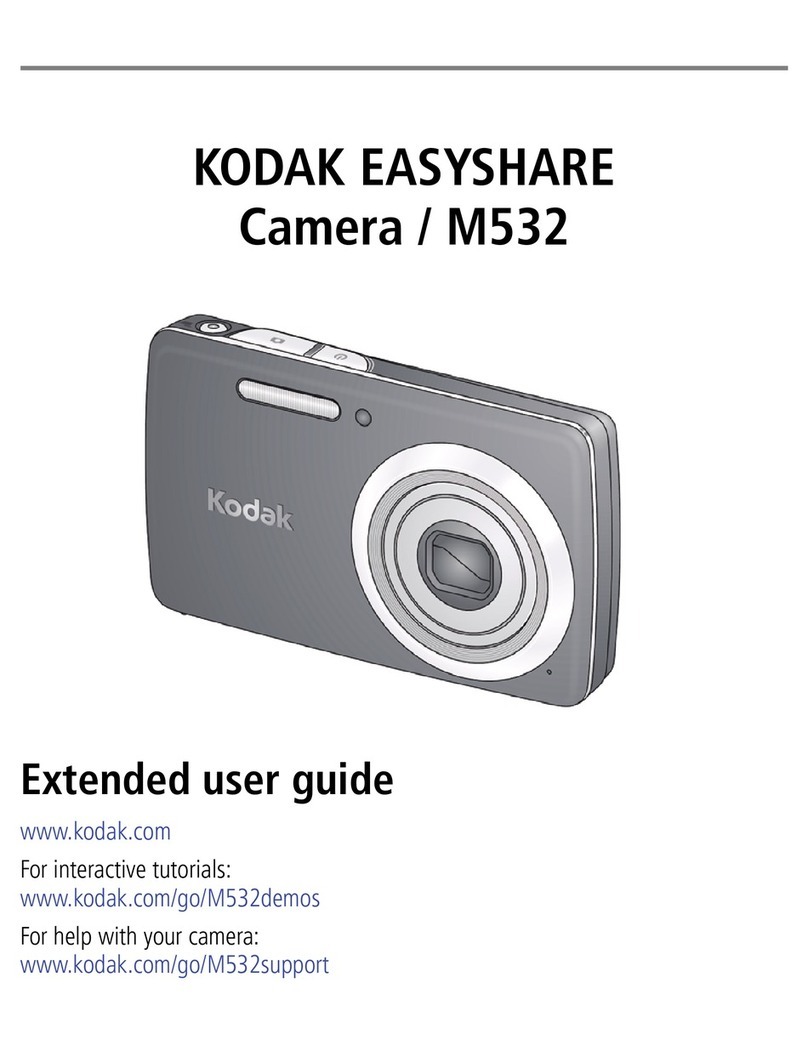The Nikon Creative Lighting System (CLS)
Nikon's advanced Creative Lighting System (CLS) offers improved
communication between the camera and compatible flash units
for improved flash photography.
II CLS-CompatibleFlashUnits
The camera can be used with the following CLS-compatible flash
units:
• TheSB-910,SB-900,SB-800,SB-700,SB-600,SB-400,andSB-R200:
I Ira color filter is attached to the SB-910, SB-900, or SB-700 when AUTOor
(flash) is selected for white balance, the camera will automatically detect the
filter and adjust white balance appropriately.
2 Wireless flash control is not available with the SB-400.
3 Controlled remotely with built-in flash in commander mode or using optional
SB-91 O,SB-900, SB-800, or SB-700 flash unit or SU-800 wireless Speedlight
commander.
4 m/ft, 20 °C (68 °F), SB-910, SB-900, SB-800, SB-700, and SB-600 at 35 mm zoom
head position; SB-91 O,SB-900, and SB-700 with standard illumination.
•SU-800WirelessSpeedlightCommander:When mounted on a CLS-
compatible camera, the SU-800 can be used asa commander for
remote SB-91O,SB-900, SB-800, SB-700, SB-600, or SB-R200 flash
units in up to three groups. The SU-800 itself is not equipped
with a flash.
[] Guide Number
To calculate the range of the flash at full power, divide the Guide
Number by the aperture. For example, at ISO I O0the SB-800 has a Guide
Number of 38 m or 125 ft (35ram zoom head position); its range at an
aperture of f/5.6 is 38+5.6 or about 6.8 meters (or in feet,
125 +5.6=approximately 23 ft 7 in.). For each twofold increase in ISO
sensitivity, multiply the Guide Number by the square root of two
(approximately 1.4).
381


